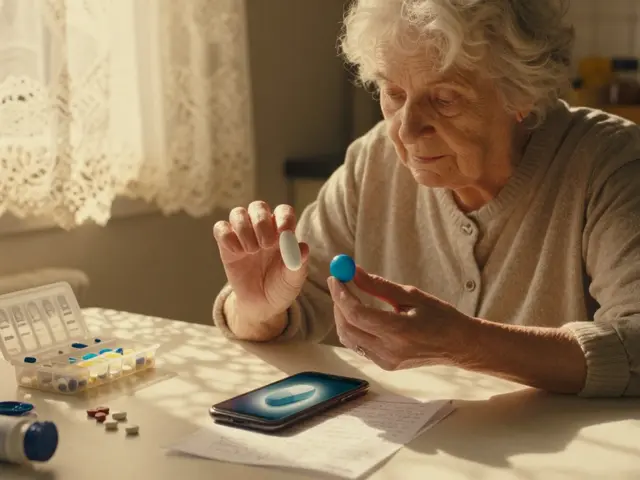Cefpodoxime: What it Treats and How to Use It Safely
If you're reading about cefpodoxime, you probably have questions: what does it treat, how do you take it, and is it safe? Cefpodoxime (often given as cefpodoxime proxetil) is a cephalosporin antibiotic doctors use for common bacterial infections like sinusitis, ear infections, bronchitis, uncomplicated skin infections, and some urinary tract infections.
How to take cefpodoxime
Take cefpodoxime exactly as your doctor tells you. It’s usually taken by mouth with food to help your body absorb it better. Typical adult dosing falls in the range of 100–200 mg twice daily, but your provider may adjust this based on the infection and your health. Don’t skip doses and finish the full course—even if you feel better after a few days. Stopping early can let bacteria come back stronger.
Missed dose? Take it as soon as you remember unless it’s almost time for the next one. Never double up to catch up.
Side effects, warnings, and interactions
Most people tolerate cefpodoxime well. Common side effects include diarrhea, nausea, stomach pain, headache, and rash. Yeast infections (oral or vaginal) can happen after antibiotics. If you get severe diarrhea, bloody stools, swelling, facial hives, or trouble breathing, get medical help right away—these can be signs of serious reactions like C. difficile infection or an allergic response.
Tell your prescriber if you’re allergic to penicillins or other cephalosporins—cross-reactivity can occur. Also mention liver or kidney problems; dose adjustments may be needed. Some medicines reduce how well cefpodoxime works—antacids, proton pump inhibitors, or H2 blockers can lower absorption. Drugs like probenecid may raise cefpodoxime levels. If you take blood thinners (warfarin), your provider may monitor you more closely while on antibiotics.
Pregnancy and breastfeeding? Talk to your clinician. They’ll weigh the benefits and risks for your situation.
If you want short, practical tips: take cefpodoxime with food, finish the course, watch for severe diarrhea or allergic signs, and tell your doctor about other meds and allergies.
Buying and handling cefpodoxime
Cefpodoxime normally requires a prescription. Be careful with online pharmacies—use licensed, reputable sources that ask for a prescription and show clear contact details. Look for pharmacist reviews, verified seals, and secure payment options. Avoid sites that sell antibiotics without a prescription or offer suspiciously low prices.
Keep antibiotics out of reach of kids and store them at the temperature on the label. If you stop treatment early or have leftover pills, ask your local pharmacy how to dispose of them safely.
Questions about a dose, an interaction, or a side effect? Contact your prescribing clinician or local pharmacist. If you want more articles on antibiotics and safe buying tips, check our guides at RxStore-365: we cover dosing, interactions, and how to spot a trustworthy online pharmacy.

Cefpodoxime for bronchitis: What you need to know
Cefpodoxime is an antibiotic that doctors often prescribe to treat bronchitis. It works by eliminating the bacteria causing the infection, thereby relieving symptoms such as coughing, wheezing, and shortness of breath. While it's generally well-tolerated, some patients may experience side effects such as nausea or diarrhea. It's critical to complete the prescribed course to prevent bacterial resistance. Always consult a healthcare professional before starting any medication, including Cefpodoxime.
Read More



